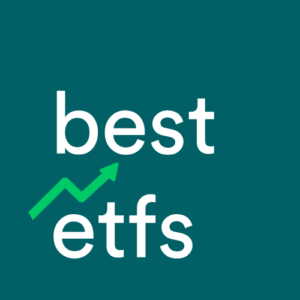On the ASX National Australia Bank Ltd. (ASX:NAB) shares are amongst the most traded, along with other bank stocks like Westpac Banking Corp (ASX:WBC) and Australia and New Zealand Banking GrpLtd (ASX:ANZ).
ASX bank shares make up nearly half of the market, measured by the market cap and the All Ordinaries Index.
I’m about to go through the absolute basics of valuing a stock like National Australia Bank Ltd.. If you’re truly interested in understanding more about how to value a bank share, you should consider watching this tutorial from the analyst team at Rask Australia.
You can subscribe to the Rask Australia YouTube channel and receive the latest (and free) value investing videos by clicking here.
[ls_content_block id=”3301″]
Sector valuations
The price-earnings ratio or ‘PE’ compares a company’s share price (P) to its most recent full-year earnings per share (E). Remember, ‘earnings’ is just another word for profit. That means, the PE ratio is simply comparing share price to the most yearly profit of the company. Some experts will try to tell you that ‘the lower PE ratio is better’ because it means the share price is ‘low’ relative to the profits produced by the company. However, sometimes shares are cheap for a reason!
Secondly, some extremely successful companies have gone for many years (a decade or more) and never reported an accounting profit — so the PE ratio wouldn’t have worked.
Therefore, I think it’s very important to dig deeper than just looking at the PE ratio and thinking to yourself ‘if it’s below 10x, I’ll buy it.
One of the simple ratio models analysts use to value a bank share is to compare the PE ratio of the bank/share you’re looking at with its peer group or competitors and try to determine if the share is over-valued or under-valued relative to the average. From there, and using the principle of mean reversion, we can multiply the profits/earnings per share by the sector average (E x sector PE) to reflect what an average company would be worth. It’s like saying, ‘if all of the other stocks are priced at ‘X’, this one should be too’.
Using National Australia Bank Ltd.’s share price today, plus the earnings per share data from its 2019 financial year, I calculate the company’s PE ratio to be 9.2x. This compares to the banking sector average of 10x.
Reversing the logic here, we can take the profits per share (EPS) ($1.739) and multiply it by the ‘mean average’ valuation for NAB. This results in a ‘sector-adjusted’ share valuation of $17.45.
[ls_content_block id=”3409″ para=”paragraphs”]
DDM modelling
A dividend discount model or DDM is different to ratio valuation like PE because it makes forecasts into the future, and uses dividends. Because the banking sector has proven to be relatively stable with regards to share dividends, the DDM approach can be used. However, we would not use this model for, say, technology shares.
Basically, we need only one input into a DDM model: dividends per share. Then, we make some assumptions about the yearly growth of the dividend (e.g. 2%) and the risk level of the dividend payment (e.g. 7%). I’ve used the most recent full year dividends (e.g. from 2019/2020) then assumed the dividends remain consistent but grow slightly.
To keep it simple, I’ll assume last year’s annual dividend payments are consistent. Warning: last year’s dividends are not always a good input to a DDM because dividends are not guaranteed since things can change quickly inside a business — and in the stockmarket. So far in 2020, the Big Banks have been cutting or deferring their dividends.
In any case, using my DDM we will assume the dividend payment grows at a consistent rate in perpetuity (i.e. forever), for example, at a yearly rate between 1.5% and 3%.
Next, we have to pick a yearly ‘risk’ rate to discount the dividend payments back into today’s dollars. The higher the ‘risk’ rate, the lower the share price valuation.
I’ve used a blended rate for dividend growth, and I’m using a risk rate between 9% and 14%.
My DDM valuation of NAB shares is $18.88. However, using an ‘adjusted’ dividend payment of $1.1 per share, the valuation drops to $12.51. The valuation compares to National Australia Bank Ltd.’s share price of $15.99.
Valuation + further research
Please, feel free to use these two models as the starting point for your process for analysing and valuing a bank share like NAB. However, remember that these are just tools used by analysts and in reality a good analyst and investor will likely conduct 100+ hours of qualitative research before diving into their spreadsheet and starting their modelling.
For example, I spend a lot of my time looking at bank shares and writing about them, but if I were thinking about investing in a bank today I’d want to get a handle on its growth strategy, economic indicators like unemployment, and then study house prices and consumer sentiment.
[ls_content_block id=”3302″ para=”paragraphs”]



